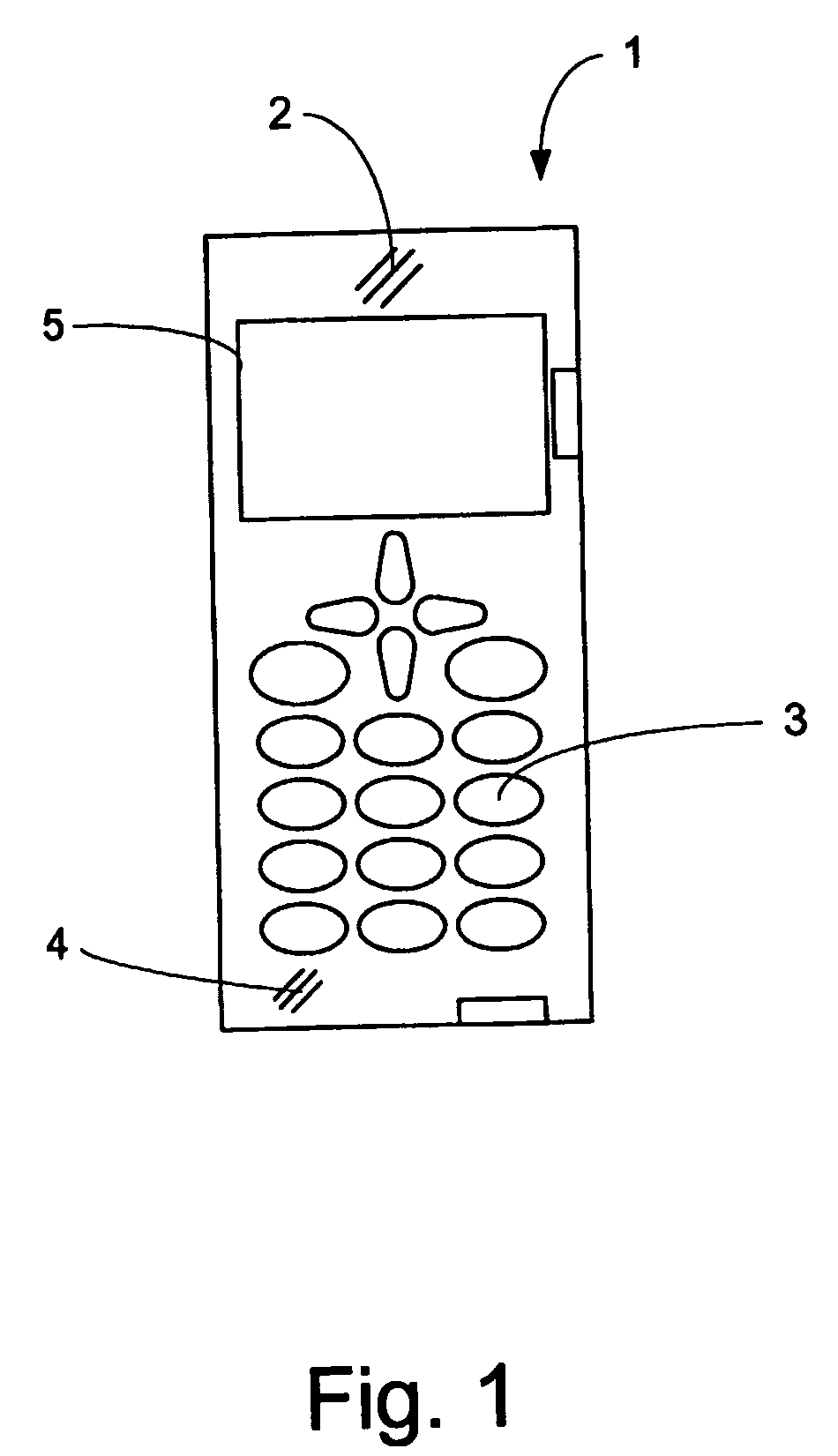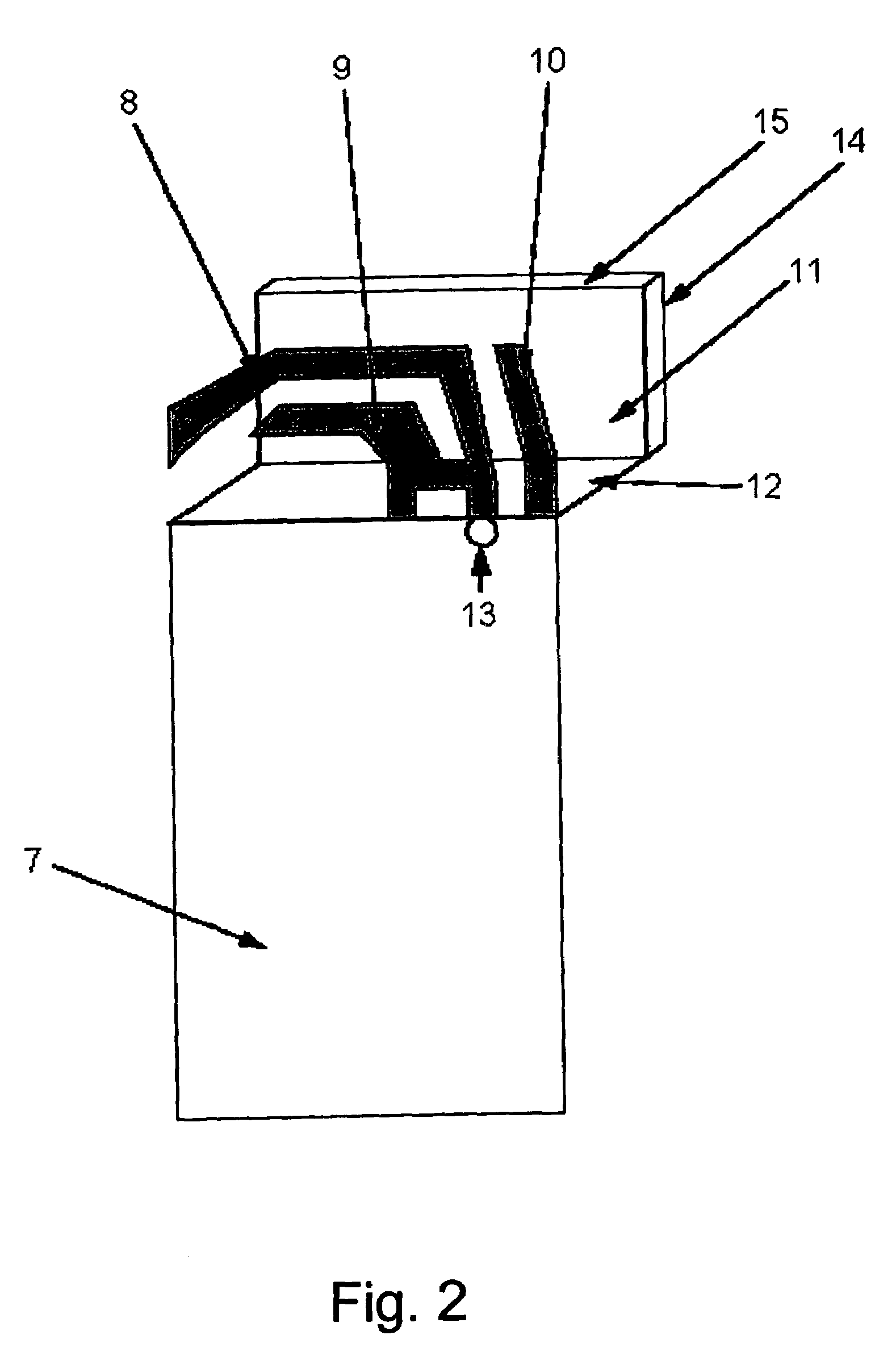Printed built-in antenna for use in a portable electronic communication apparatus
a portable electronic communication and built-in antenna technology, which is applied in the structural form of the antenna, the structure of the antenna, and the antenna earthing, etc., can solve the problems of affecting the performance of the antenna, the connector and the assembling of the antenna and the pcb add considerable cost to the mobile telephone, and the antenna is still too large to fit the small mobile telephone chassis, etc., to achieve the effect of maximizing the interior space of the electronic communication apparatus, good radiation characteristics, and low cos
- Summary
- Abstract
- Description
- Claims
- Application Information
AI Technical Summary
Benefits of technology
Problems solved by technology
Method used
Image
Examples
Embodiment Construction
[0021]FIG. 1 illustrates a mobile telephone 1 as one example in which the printed built-in antenna according to the invention may be used. However, the inventive antenna may be used in virtually any other portable electronic communication apparatus, in which a built-in antenna is preferred.
[0022]The mobile telephone 1 shown in FIG. 1 comprises a loudspeaker 2, a keypad 3, a microphone 4, and a display 5 as is generally known in the art. Further, the mobile telephone 1 comprises the antenna according to the invention, which is built-in into the chassis of the mobile telephone 1.
[0023]FIG. 2 illustrates a multi-band printed built-in antenna according to a first embodiment of the invention. The antenna comprises a pattern of conductive material printed directly on the main printed circuit board (PCB) 7 of the mobile telephone 1. In FIG. 2, the PCB 7 is shown as ending at the beginning of the antenna pattern. However, as is apparent to the man skilled in the art, this is only for illust...
PUM
 Login to View More
Login to View More Abstract
Description
Claims
Application Information
 Login to View More
Login to View More - R&D
- Intellectual Property
- Life Sciences
- Materials
- Tech Scout
- Unparalleled Data Quality
- Higher Quality Content
- 60% Fewer Hallucinations
Browse by: Latest US Patents, China's latest patents, Technical Efficacy Thesaurus, Application Domain, Technology Topic, Popular Technical Reports.
© 2025 PatSnap. All rights reserved.Legal|Privacy policy|Modern Slavery Act Transparency Statement|Sitemap|About US| Contact US: help@patsnap.com



